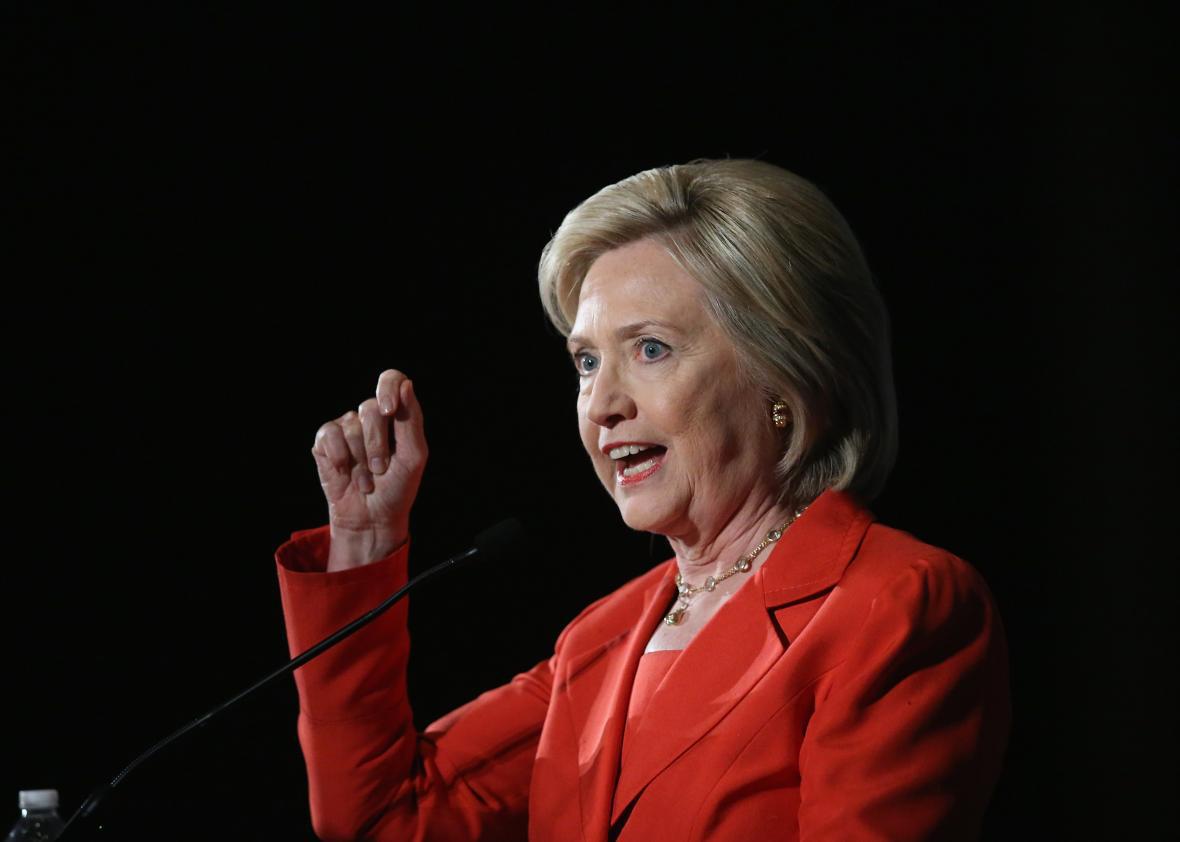At long last, Hillary Clinton has finally given the climate crowd something to get excited about. On Sunday the Democratic hopeful unveiled the first specific plank of what she is promising will be a comprehensive plan to address global warming. Clinton’s bold-faced goals are something to behold: Installing more than half a billion solar panels in the United States by the end of her first term, and generating enough clean energy to power every home in the country within a decade of taking office.
Her energy proposal won’t be enough to completely win over climate hawks, who have been skeptical of her environmental bona fides—but it’s a solid start. Climate activists have long demanded that the next president go further than President Obama, and Clinton’s proposal would do just that. In addition to protecting the historic climate rules being implemented by Obama’s Environmental Protection Agency, Clinton is pledging to boost solar, wind, and other renewables to the point where they provide 33 percent of the country’s electricity by 2027. Obama, meanwhile, has put the country on the path to reach about 25 percent by that same year.
Exactly how Clinton would get us to her goal remains unclear. But the broad brushstrokes suggest she’d rely heavily on tax incentives to spur the growth of renewables—particularly solar, which she says would see a 700 percent increase in U.S. capacity under her plan. At the center of her proposal is what her campaign has dubbed the Clean Energy Challenge, which would include: grants and “other market-based incentives” to encourage states to go above and beyond the actions required by federal law; a boost to federal investment in clean energy R&D; and an expansion of renewable production on public lands. She’s also expected to push to extend current federal tax credits for solar and wind that are set to expire soon. Clinton’s campaign pegs the estimated cost of the entire plan at about $60 billion over 10 years, which would be offset by eliminating tax breaks for the oil and gas industry.
“We need to get the incentives fixed in our tax system, which as you know are too heavily weighted toward fossil fuels,” Clinton said Sunday while campaigning in central Iowa ahead of her more formal climate rollout on Monday in Des Moines.
My colleague Eric Holthaus will have much more on the policy specifics and how they stack up against the plans already put forth by Bernie Sanders and Martin O’Malley in a bit. But on the strictly political side of the equation, it’s clear that Clinton’s proposal is clever. She’s telling Americans what she’ll add—rooftop solar for more than 25 million homes!—without having to address the more politically fraught conversation of what she’s willing to subtract. Notably missing from the policy rollout was any mention of blocking Keystone XL, the controversial pipeline that has become a high-profile litmus test for the climate crowd, or a pledge to curb fossil fuel extraction on public lands.
Clinton’s got a ways to go before fully captivating the climate hawks. The four-page fact sheet released by her campaign offered only vague promises that her climate policy planks will ensure “that fossil fuel production taking place today is safe and responsible, that taxpayers get a fair deal for development on public lands, and that areas that are too sensitive for energy production are taken off the table.” Until Clinton fills in the blanks on just what is “safe and responsible” and what isn’t, the issue will remain a red flag for Team Green, particularly given Clinton’s previous comments suggesting a much more moderate, let’s-not-move-too-fast approach to issues of drilling and mining. “Hillary Clinton is half the way there,” climate activist Bill McKibben said in a statement Monday that made it clear he and his allies will be watching for Clinton to weigh in on offshore drilling in the Arctic and coal mining in the Powder River Basin.
For now, though, Clinton has seized some much-needed momentum on an issue she’s had problems with in the past. Not incidentally: Her clean energy proposal appears to pass the clean energy litmus test unveiled late last week by Tom Steyer, the billionaire environmentalist who is expected to spend tens of millions of dollars through his super PAC in the 2016 election.
Elsewhere in Slate:
- A Liberal Megadonor Just Gave Hillary Millions of Reasons to Get Specific on Climate
- Hillary Got Heckled by a Climate Activist at a Town Hall. She Didn’t Handle It Well.
- All the Unscientific Excuses the GOP Presidential Hopefuls Use to Deny Climate Change
- Democrats Assumed They Could Embarrass the GOP with Climate Change. Democrats Were Wrong.
- Obama Tells the Truth About Climate Change. Oops?
